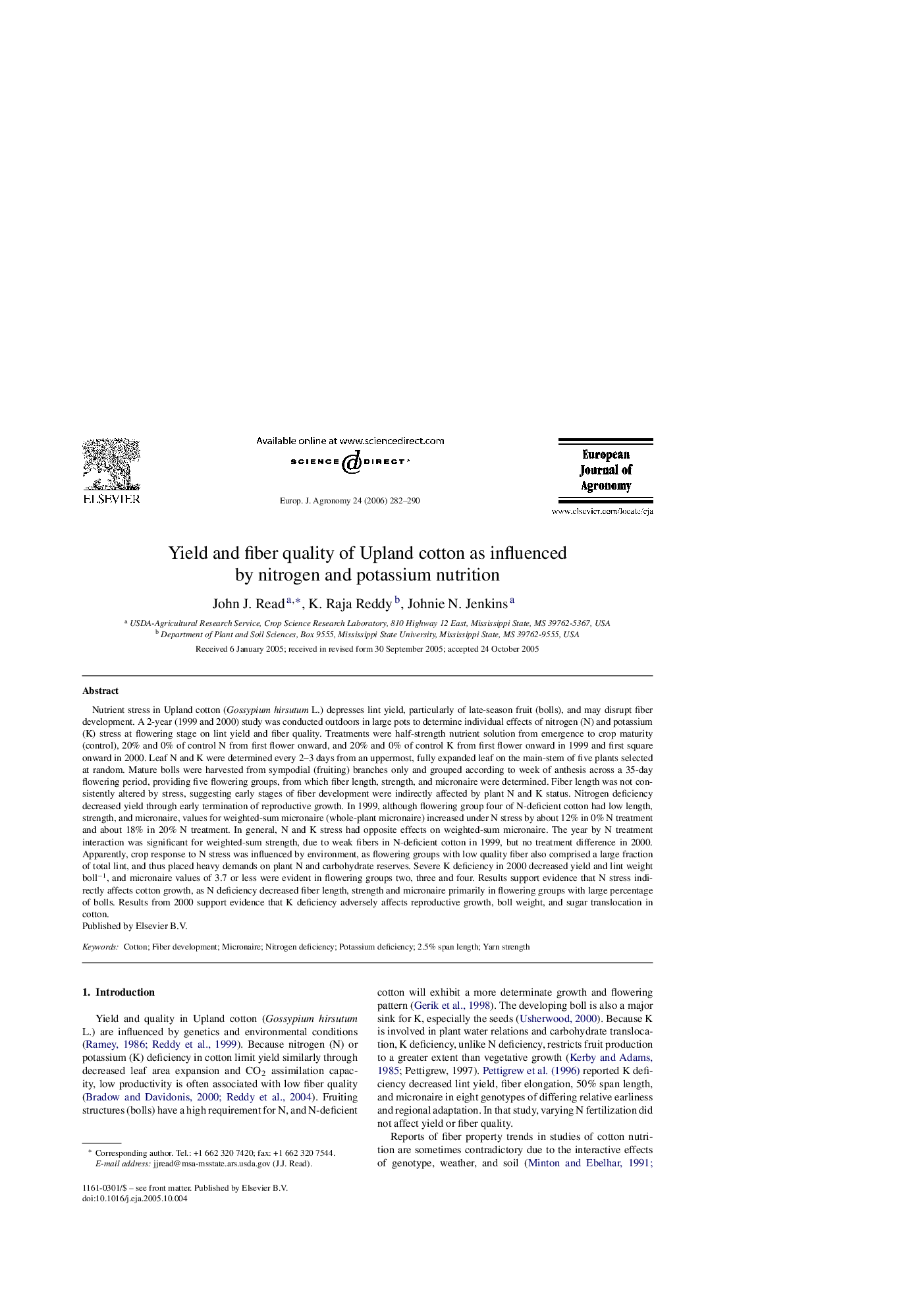| کد مقاله | کد نشریه | سال انتشار | مقاله انگلیسی | نسخه تمام متن |
|---|---|---|---|---|
| 4509783 | 1624533 | 2006 | 9 صفحه PDF | دانلود رایگان |

Nutrient stress in Upland cotton (Gossypium hirsutum L.) depresses lint yield, particularly of late-season fruit (bolls), and may disrupt fiber development. A 2-year (1999 and 2000) study was conducted outdoors in large pots to determine individual effects of nitrogen (N) and potassium (K) stress at flowering stage on lint yield and fiber quality. Treatments were half-strength nutrient solution from emergence to crop maturity (control), 20% and 0% of control N from first flower onward, and 20% and 0% of control K from first flower onward in 1999 and first square onward in 2000. Leaf N and K were determined every 2–3 days from an uppermost, fully expanded leaf on the main-stem of five plants selected at random. Mature bolls were harvested from sympodial (fruiting) branches only and grouped according to week of anthesis across a 35-day flowering period, providing five flowering groups, from which fiber length, strength, and micronaire were determined. Fiber length was not consistently altered by stress, suggesting early stages of fiber development were indirectly affected by plant N and K status. Nitrogen deficiency decreased yield through early termination of reproductive growth. In 1999, although flowering group four of N-deficient cotton had low length, strength, and micronaire, values for weighted-sum micronaire (whole-plant micronaire) increased under N stress by about 12% in 0% N treatment and about 18% in 20% N treatment. In general, N and K stress had opposite effects on weighted-sum micronaire. The year by N treatment interaction was significant for weighted-sum strength, due to weak fibers in N-deficient cotton in 1999, but no treatment difference in 2000. Apparently, crop response to N stress was influenced by environment, as flowering groups with low quality fiber also comprised a large fraction of total lint, and thus placed heavy demands on plant N and carbohydrate reserves. Severe K deficiency in 2000 decreased yield and lint weight boll−1, and micronaire values of 3.7 or less were evident in flowering groups two, three and four. Results support evidence that N stress indirectly affects cotton growth, as N deficiency decreased fiber length, strength and micronaire primarily in flowering groups with large percentage of bolls. Results from 2000 support evidence that K deficiency adversely affects reproductive growth, boll weight, and sugar translocation in cotton.
Journal: European Journal of Agronomy - Volume 24, Issue 3, April 2006, Pages 282–290